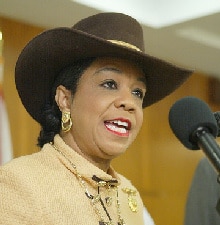No Insurance but Not at Fault: What Are Your Rights?

You were in a car accident, and you sustained injuries because of it. Your vehicle may be damaged as well. As if this isn’t bad enough, your insurance coverage lapsed and now you aren’t sure what to do. You didn’t cause the collision, so what are your rights and is the other party still responsible for your damages?
Filing a Claim with the At-Fault Driver’s Insurance Company
Because you didn’t cause the collision, you can do the same thing you would have done if you had insurance, and that is call the other driver’s insurance company. The agent will ask for your name and other pertinent information.
The insurance company’s adjuster will ask you to describe your version of the events. They will need to determine the reason that the collision occurred before they can offer a settlement. If you took pictures at the scene, present these to the adjuster along with any other evidence that proves the other party was at-fault.
You may consult with a personal injury attorney before you contact the other driver’s insurance company. In fact, you probably should if you want to make sure you get an adequate settlement. Be prepared to allow the adjuster to inspect your vehicle for damages.
Obtaining Payment
Auto insurance companies are not known for willingly paying victims of car accidents. The other driver’s insurance company may employ delay tactics or deny that their driver was at fault in the collision. If things begin to become difficult for you, you may hire an attorney if you haven’t done so already. Your attorney will take over the negotiations with the insurance company from that point on.
What Happens Next?
Your claim will go on as it ordinarily would have if you had insurance, but you will also have other issues with which to contend because you were driving without auto insurance. In most states, you are required to carry bodily injury liability insurance and property damage liability insurance. Disobeying this law can lead to significant consequences.
The rules for each state are different, but the first time that you are caught driving without auto insurance may result in the suspension of your license and your vehicle registration. Your license plates may also be suspended, but you can have your registration and license plates reinstated by paying a fee.
The SR-22 Certificate
In your state, you may be required to file an SR-22 with your Department of Motor Vehicles or DMV. The SR-22 is a document that your state places on file that proves that you have the required liability insurance for your state.
If you are going to need to have the SR-22 certificate, this will make it more difficult for you to obtain liability insurance. Not every auto insurance company can provide this certificate for you, and it will cost you a fee. To get liable auto insurance you can approach non-owners insurance North Carolina.
Liability Auto Insurance After Driving Uninsured
You will have several fees to pay because of your choice to drive without auto insurance coverage, but your auto insurance will also be more expensive. Liability insurance will cost more because you will be designated as a higher risk after driving without auto insurance. Your rates will be higher as a result.
A Second Conviction
If the current stop is your second conviction for driving without auto insurance within five years, the DMV will suspend your driver’s license for 365 days. In order to have your license plates and your registration reinstated, you will be required to pay a $360 fee. If this is your third or fourth conviction for driving without auto insurance, your state will give you even more penalties.
If you fall victim to a car accident and you lack insurance, check out this article. For more information, you may want to consult with an attorney to learn more about your rights and options after an injury accident. This is especially critical if there was a fatality involved.



